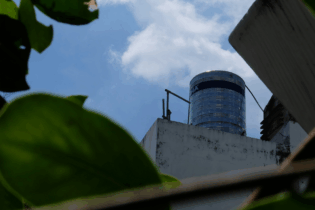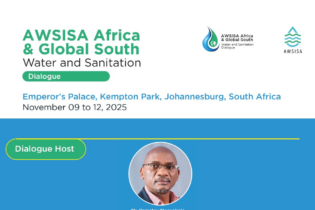
Gamtoos Irrigation Board project manager James Jansen (front) inspects the state of the Swartkops River, which is under threat from the invasive alien water hyacinth. GIB manages the ongoing Working for Water clearing project on the river. With Jansen are WfW contractors Thembinkosi Bless (left) and Dinilesizwe Jijana (right). Photo: Brian Witbooi
According to area manager Andrew Knipe, the battle for the Swartkops has been raging for a few years, and steady progress is finally being made, with teams of workers clearing and maintaining the river and floodplain.
Since 2011, the project has cleared more than 765 hectares, with follow-up work completed on over 2 672 hectares.
Rising pollution feeding hyacinth population
Alien vegetation, water hyacinths in particular, is a major issue for the Working for Water initiative. According to Knipe the problem is compounded by industrial and agricultural pollutants entering the river.
This, he warns, is not a problem that is going to go away any time soon, with pollution levels escalating.
“One of the problems is that the capacity of the Kelvin Jones water treatment works is too small to cope with the vast amounts of sewage being fed into it, so sewage is released into the river,” Knipe says, explaining that when pollution levels are high, the water hyacinth population explodes, doubling every 14 days.
If the water hyacinths get out of control they can cover the entire river, absorbing all the oxygen from the water, killing fish and plant life.
Keeping aquatic weeds at bay
The solution, in part, lies in clearing the river of these aquatic weeds, as well as the surrounding land of alien vegetation, including eucalyptus (bluegum), acacia saligna (Port Jackson willow) and sesbania.
Keeping control of this mammoth task is project manager James Jansen, who works with an annual budget of R1.5-million and oversees three teams of 12 members each.
“One of the major challenges is that we’re treating the symptoms not the cause,” says Jansen.
Educating the public about the environmental dangers posed by invasive alien plants remains an important aspect of the work that lies ahead, says Knipe.
With the support of landowners a lot of work has been done thus far he adds.
“The road ahead is a difficult one and, even though a lot of resources have been dedicated to the fight, more needs to be done if we are to rid our country of this scourge,” Knipe concludes.








